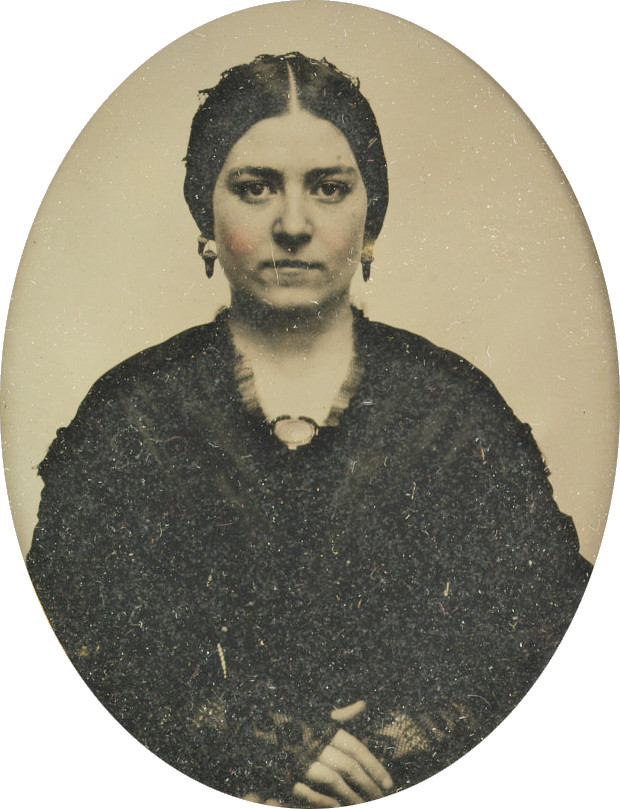Tales of life on the high seas have encapsulated people’s imaginations for centuries: overcoming massive storms, narrowly escaping pirate attacks, and discovering uncharted territories.
But sometimes, the reality is even more intriguing than the stories. This is the case with the story of Mary Ann Brown, the 19-year-old ship captain who merely fell into the position by accident.

Early Life
Mary Ann Brown was married just before her 16th birthday to the young captain Joshua Patten in 1853. He was 25 and still making a name for himself in the shipping world.
After several years of transporting passengers and cargo between New York and Boston, Patten was offered a new opportunity in 1855. He was offered the position of captain of the merchant ship Neptune’s Car.
The previous captain of the ship had fallen ill just days before the next voyage. They scrambled to find a replacement to run the ship. Within a day, Mary and Joshua were aboard the ship ready to set sail.
Learning the Seas
They spent the next year and a half sailing the world together. They delivered cargo to San Francisco, China, and London before returning to New York.
Mary spent the trip learning all about seamanship from Joshua. She learned how to navigate the ship and assisted Joshua in his duties as captain.
In many ways, she became more qualified to operate a ship than most of the crew. After a short time in New York again, Captain Patten and Neptune’s Car were quickly chartered for another journey.
The Neptune’s Car’s Voyage
Neptune’s Car had a reputation as a fast ship. This is why it was chosen for a new contract transporting mining gear and supplies to San Francisco in 1856.
During the gold rush, speed was essential in the clamber for economic prosperity. Patten bragged that he would be able to complete the journey in just 100 days.
The Intrepid and Romance of the Seas were also carrying cargo to San Francisco. Bets were set up between different sailors to sweeten the pot for whoever could make the trip fastest.
Immediately though, Patten was at a disadvantage. His first mate fractured his leg and was unable to join him on the voyage. The company that had chartered the ship refused to delay the trip because it would cut into profits.
So Patten was forced to quickly sign a new first mate and depart from New York. The week of July 1, 1856, the three ships took off from New York on their long journey, with Mary Ann Brown joining her husband once again.
Crumbling Leadership
These ships set sail before the construction of the Panama Canal. This meant that getting to the other side of the continent required sailing south around Cape Horn, the southern tip of the South American continent.
The trip normally took four months to travel nearly 15000 miles around the continents. Before reaching the cape, Patten found that his newly signed first mate was either incompetent or purposefully sabotaging the ship’s progress in favor of a bet.
After catching the first mate sleeping multiple times and slowing the ship by neglecting to set sails properly, Patten ordered he be confined below deck.
The second mate also turned out to be incapable of navigating the ship because he lacked the knowledge and was illiterate. Therefore, Patten was forced to take on the first mate’s responsibilities as well as his captain role.
The Captain Falls Ill
Already ill before departing from New York, Patten was not able to handle the pressure of both roles very long.
As the ship approached Cape Horn, perhaps the most dangerous part of the journey, Patten had been on deck for eight days straight to keep the ship on course. The toll of this work was too much for Patten to bear.
He collapsed. The crew diagnosed him with “brain fever,” although historians state he suffered from tuberculosis.
With no captain and no first mate, the ship seemed unlikely to make it to port until Mary Ann Brown stepped up. Unbeknownst to anyone but her husband though, the 19-year-old was pregnant with her first child.
Mary Ann Brown to the Rescue
Against all odds, Mary stepped up to fulfill the role of captain after Patten collapsed. Mary drew on her knowledge from her global escapades with her husband in years prior.
From below deck, the first mate saw his opportunity to enact his revenge on the sick captain. After writing a letter to Mary, begging her to reinstate him as the one in charge of the ship, she responded that if Joshua did not trust him then she would not either.
So he attempted to convince the crew to mutiny and put the ship into port in Chile. Fearing the worst, Mary gathered the crew and appealed to each individually. She retained their loyalty and dedication to ensuring the ship would make it to San Francisco.
A Legendary Captain
Mary successfully navigated the ship into port in San Francisco through icebergs, foul weather, and windless seas while also caring for her comatose husband.
Without her constant care, Patten would likely have died during the journey. Upon pulling into port, dockworkers looked in awe at a six-month pregnant woman leading the ship with her sickly husband beside her.
Her bravery earned her a reward from the shipping company for ensuring the goods were delivered despite bad weather and a mutiny, and the ship even beat the Intrepid.
Mary and Joshua returned to Boston, where shortly after she gave birth to their son. Unfortunately, Joshua would only live for another year. Mary would only live for 4 more years.
But their epic journey is forever ingrained in the lore of the sea.
References
“Mary Ann Brown Patten: First Woman Clipper Ship Commander.” womenhistoryblog.com. https://www.womenhistoryblog.com/2015/11/mary-ann-brown-patten.html.
“Women in Transportation History: Mary Ann Brown Patten.” Transportationhistory.org, March 1, 2017. https://transportationhistory.org/2017/03/01/women-in-transportation-history-mary-ann-brown-patten/.

